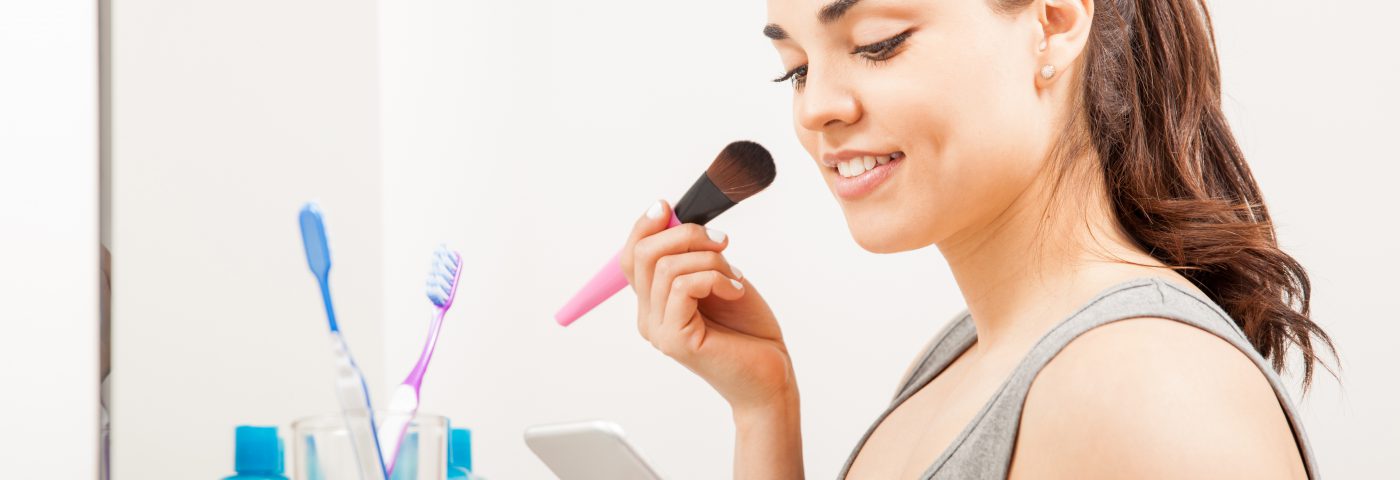With Happy Marketer presenting upon What Asia’s mobile-first market means to you at in-cosmetics Korea 2017, we caught up with Sanchit Mendiratta, one of the company partners, to get his thoughts upon the topic…
Question 1: How has the growth of mobile platforms been applied to the beauty industry?
According to Facebook’s The Mobile Makeover, 63% of beauty customers have agreed they can’t live without their mobile device or smartphone, while 45% of beauty customers have agreed that their cell phone is rapidly turning into their most essential shopping tool.
The connection to mobile is much more personal and intimate, compared to that of TVs and computers. Smartphones have doubled up as personal beauty consultants. Rather than seeking gleaming design magazines for motivation, shoppers can look at an influencer’s tutorial or a friend’s selfie or reviews, all on the mobile. They can seek beauty content such as tutorials, tips, blogs, reviews and recommendations, hacks, and product descriptions, anytime and anywhere (whether inside the store or outside), with just a few taps on their portable device.
Mobile also plays an important role in the discovery of content and innovation in the beauty industry such as beauty apps that are powered by AR/VR technology to check how a particular lip colour or nail paint looks on a customer before making an online purchase. The strengths of the mobile technology such as high quality visual content shown by apps such as Instagram, location targeting (geolocation-based technology used by brands to give specific offers when the customer is around the store) align well with the needs of the millennials. Thus, in a way, mobile technology is reducing the gap between between the customer and the brand
Question 2: What kind of information do you think the beauty industry will be able to convey via mobile platforms and how will the purchasing method develop in the future?
Following are the types of products/information that beauty consumers are increasingly seeking, and such information can be provided by mobile platforms:
Rise of Safe Cosmetics Consumers : The ThinkDirty mobile app can scan the barcode of beauty products and share vital information about the nature (safe/toxic of the ingredients used in the cosmetics.
Personalization of Beauty Products: The millennials and the selfie generation desire products that are highly customized for them. And for this segment of the population, a better thing than getting a product customized is creating the product by themselves.
Finding Ferdinand is a brand that allows customers to mix shades of lipsticks of their own preferences from the palette, and place the order online via the app.
MatchCo turns the camera of the smartphone into a colorimeter to figure out the skin tone of a customer, and creates a the colour matching the unique colour of the customer.
Following is an example about how purchasing of beauty products is evolving, and how mobile is being instrumental in the same:
Automatic Beauty Shopper for Customers
Stash is a mobile app that shops beauty products for customers. By scanning the barcodes of the at-home beauty products, the app generates a database of the customer’s favourite products. It then automatically calculates the time when the product is likely to get over and adds the product to the cart.
Question 3: Can you give us examples of mobile marketing in leading cosmetics companies in the US and Europe?
Glossier: In 2016, Glossier, a brand that got created out of a well-known beauty blog ‘Into the Gloss’, increased its revenue by 600% through mobile marketing and app innovation.
Dior: Dior has launched Dior Insider, a chatbot that uses Messenger to deliver personalized, premium content to the consumers.
L’Oreal: L’Oreal partnered with AR firm ModiFace in 2016, and has launched a number of AR beauty apps such as L’Oreal’s Makeup Genius app and YouCam Makeup.
Question 4: Do you think immersive technology such as Virtual Reality (VR) and Augmented Reality (AR) can be applied to the actual beauty business? If possible, how will it be applied?
Immersive Technology such as Virtual Reality & Augmented Reality are already being applied by the beauty industry. Some examples on how brands from this space have been leveraging on the technology –
ModiFace: Modiface is one of the top makers of beauty and image editing applications supported by AR technology. It shows live changes in 3D for makeup, hair, skin and anti-aging for brands like Clinique, Estée Lauder, Shiseido and Shu Uemura. ModiFace said that its innovation is utilized as a part of more than 150 apps, and has been downloaded over 60 million times.
YouCam Makeup App: YouCam Virtual Makeover & Beauty Studio allows customers to try on makeup with an AR technology. The app is one of the highly rated apps in Google photography apps, and has earned more than 1.27 million five-star reviews.
L’Oréal’s Makeup Genius: L’Oréal’s Makeup Genius instead of displaying products on static images, showcases them in the form of real-time videos. The app can capture 64 facial points, up to 100 expressions and head movements of up to 60 degrees. The app has been downloaded 6.3 million times.
Sephora To Go: Sephora has pioneered in using mobile app to improve the in-store shopping experience with the Sephora To Go app. The app adds fun to the experience of shopping and provides information required by the consumers when they are at the store.
Sanchit Mendiratta will be speaking upon this topic in the Marketing Trends & Regulations Theatre at 13:00-13:45 on 20 June 2017.

